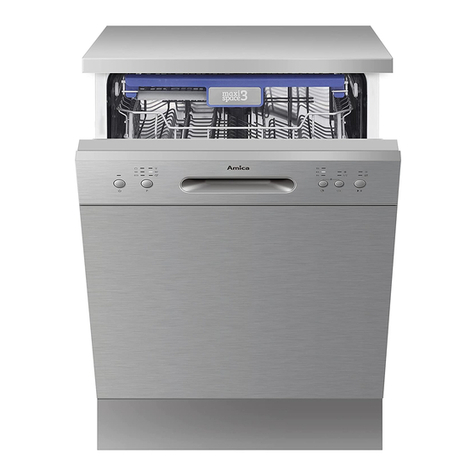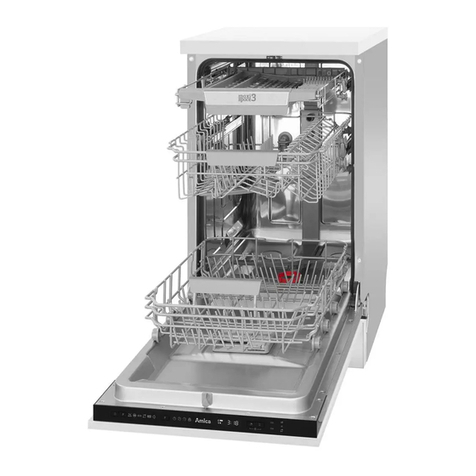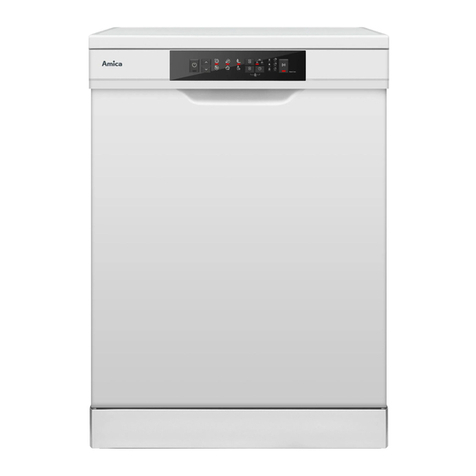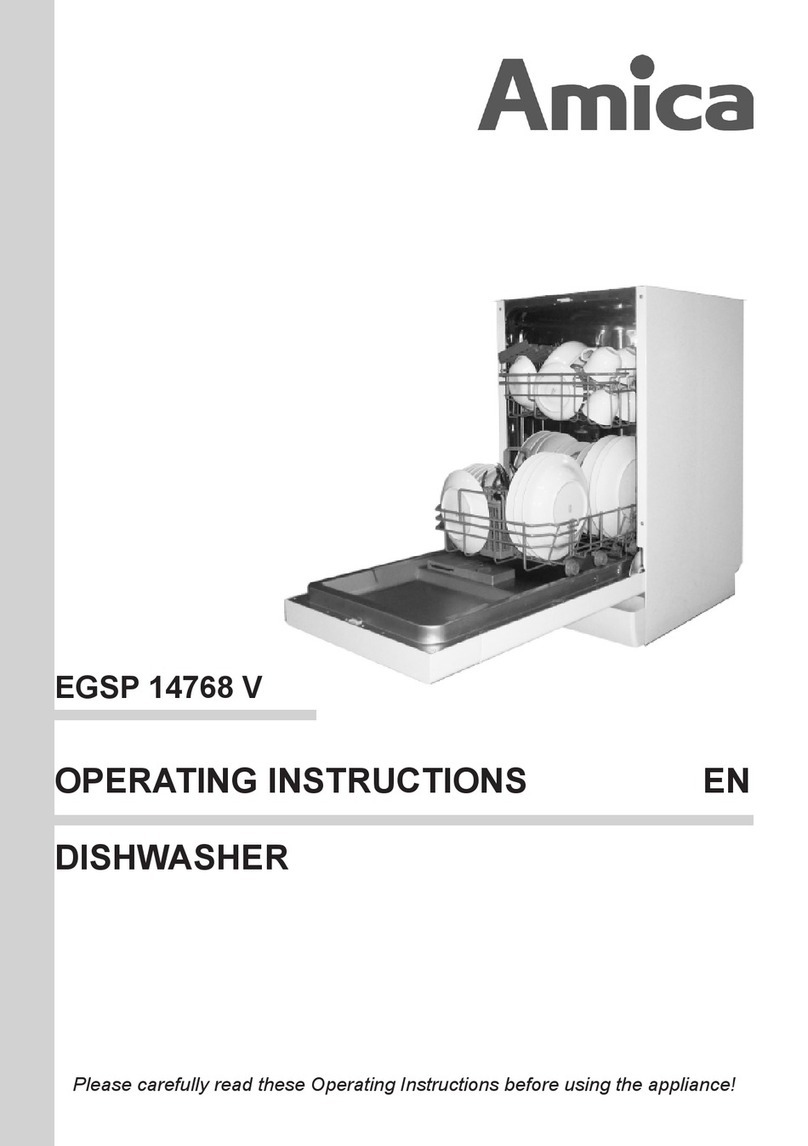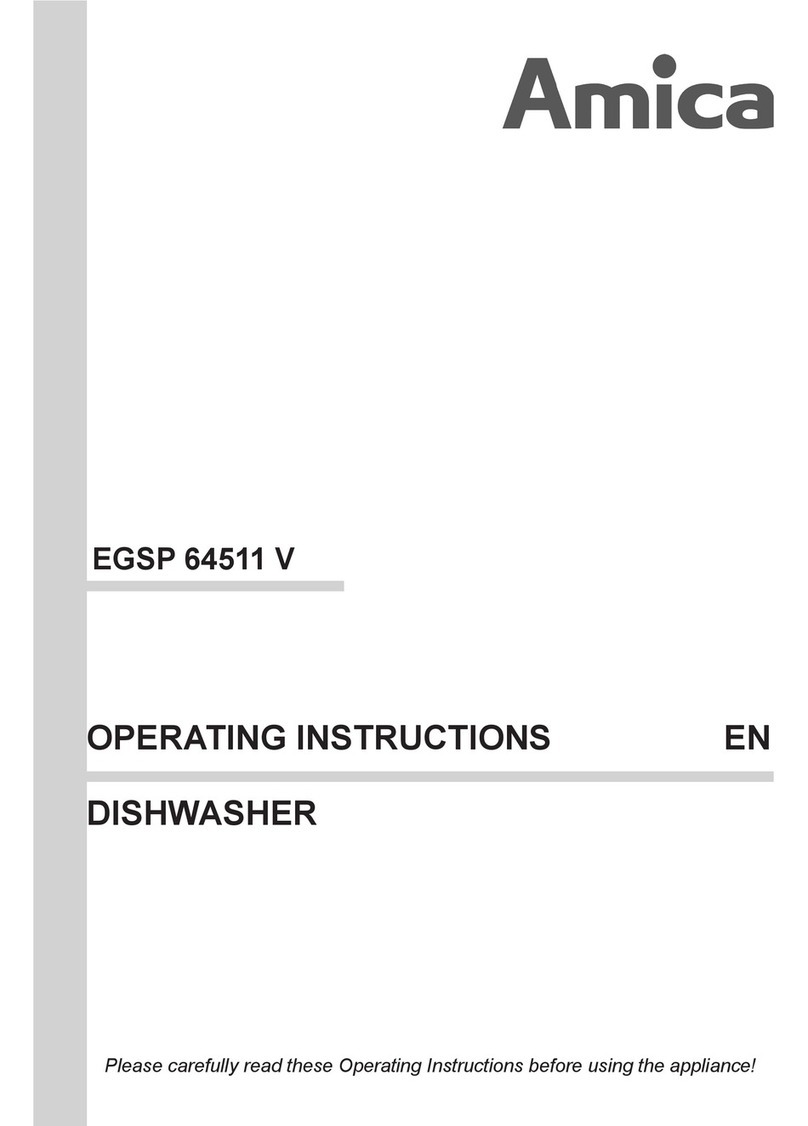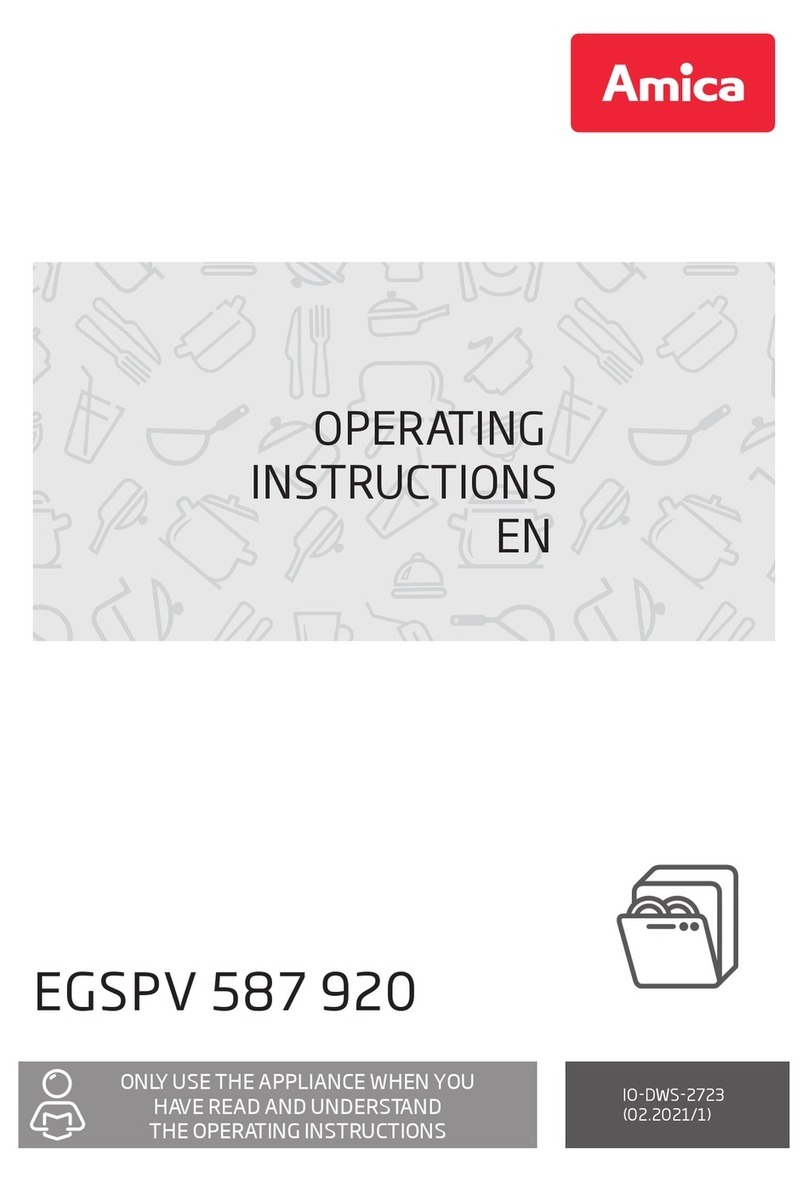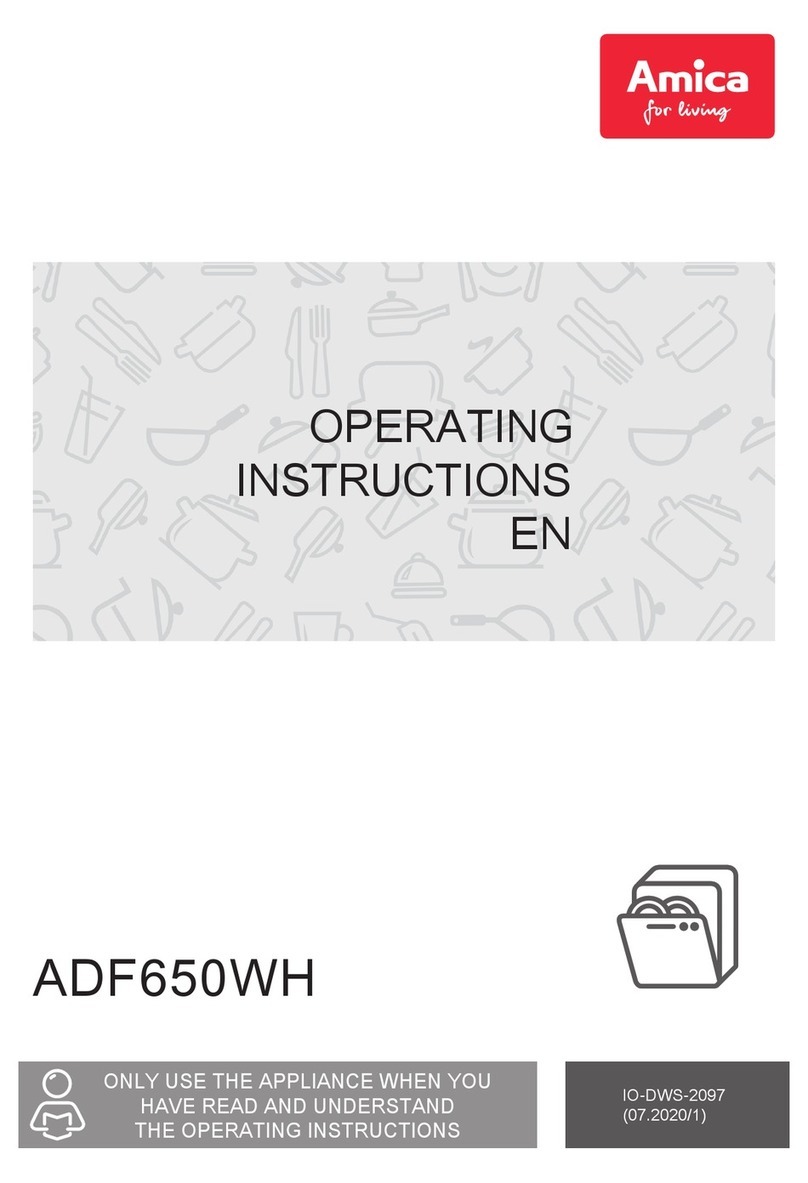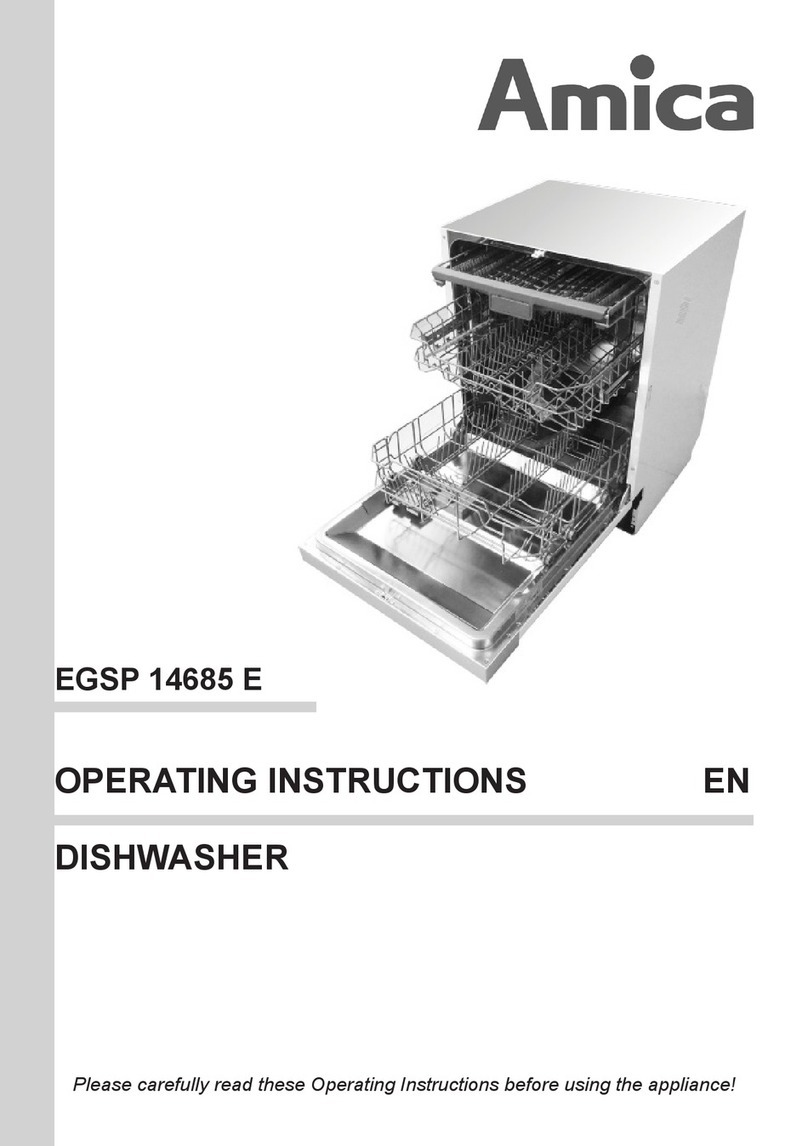CONTENTS
Getting familiar with your machine ………………………………………………………. 2
Safety information and Recommendations………………………. .............................. 3
Installing the machine ………………………………………………………………………. 7
•Positioning the machine ………………………………………………………………...
7
•Water connections …………………. ......................................................................
7
•Water inlet hose ….………………………………………………………………………
8
•Water outlet hose …..………………. ......................................................................
8
•Electrical connection…………………………………………………………………….. 9
Preparing the machine for use ……………………………………………………………. 10
•The importance of water decalcification ……………………………………………… 10
•Filling with salt …………………………………………………………………………… 10
•Testing strip………………………………………………………………………………. 11
•Adjusting salt consumption……………………………………………………………... 11
•Detergent usage ……………………. ......................................................................
13
•Filling the detergent compartment……………………………………………………... 13
•Combined detergent ……………………………………………………………………. 13
•Filling with rinse aid and making the setting………………………………………….. 14
Loading your dishwasher .…………………………………………………………………….. 16
•Dish rack …………………………………………………………………………………… 15
•Alternative basket loads …………………………………………………. ..........................
17
Programme descriptions .……………………………………………………………………...
18
•Programme items …………………………………………………………………………...
18
Switching on the machine and selecting a programme……………. ............................. 19
•Switching on the machine………………………………………………………………….. 19
•Programme follow-up……………………………………………………………………….. 19
•Changing a programme ……………………………………………………………………
19
•Changing a programme with resetting ……………………………………………………
20
•Switching the machine off ….………………………………………………………………
20
Maintenance and Cleaning . ............................................................................................. 21
•Filters ..……………………………………………………………………………………….
21
•Spray arms ………………………………………………………………………………….. 22
•Hose filter ……………………………………………………………………………………. 22
Failure codes and what to do in case of failure …………………………………………. 23
Practical and useful information……………………………………………………………... 25
